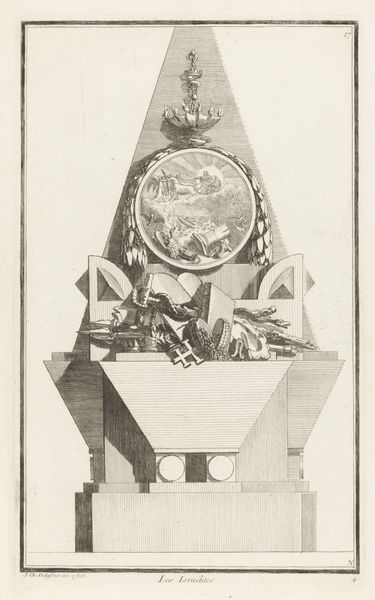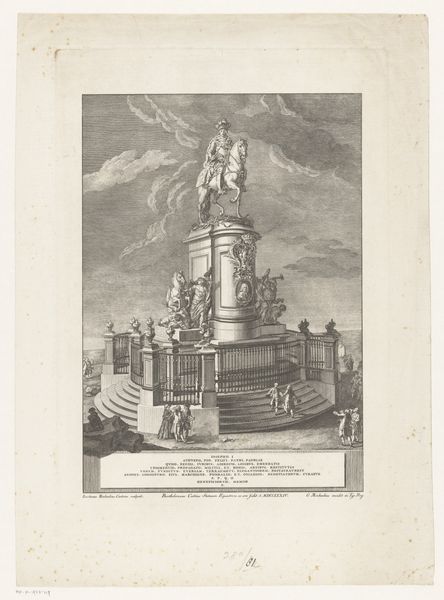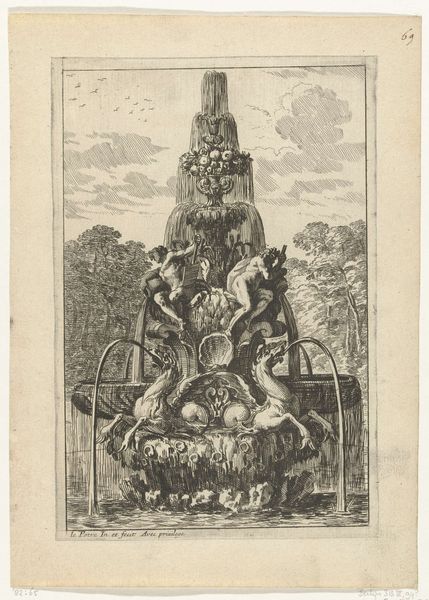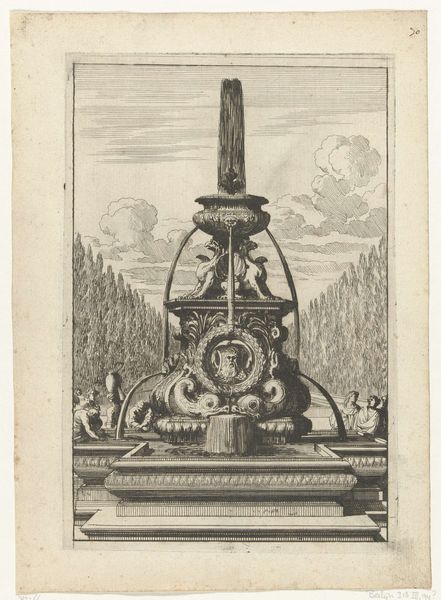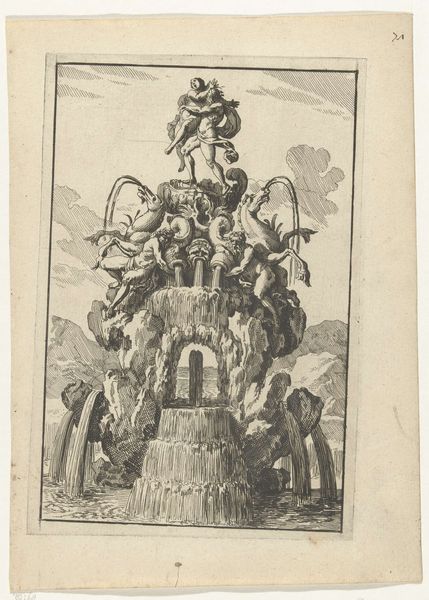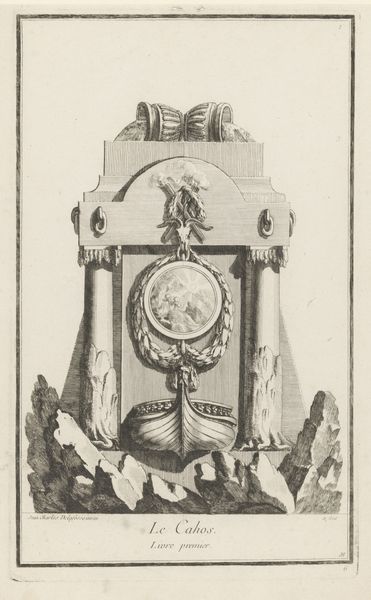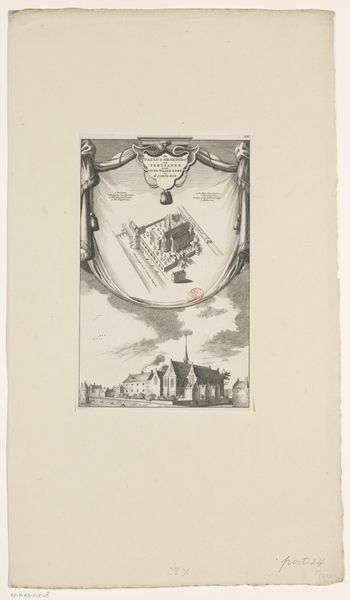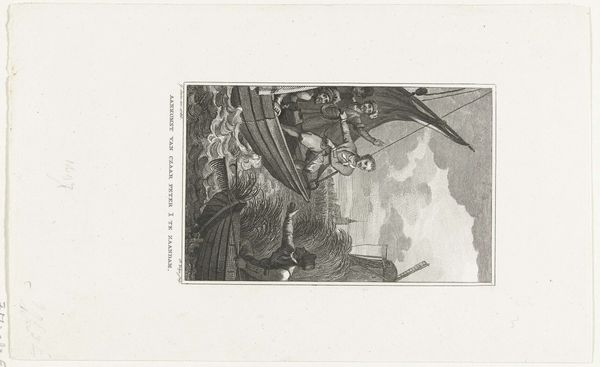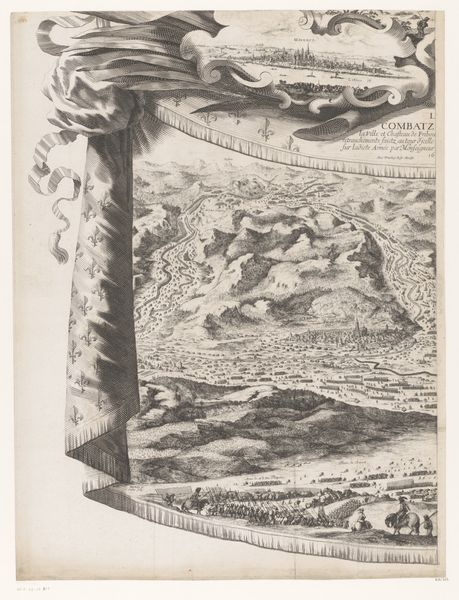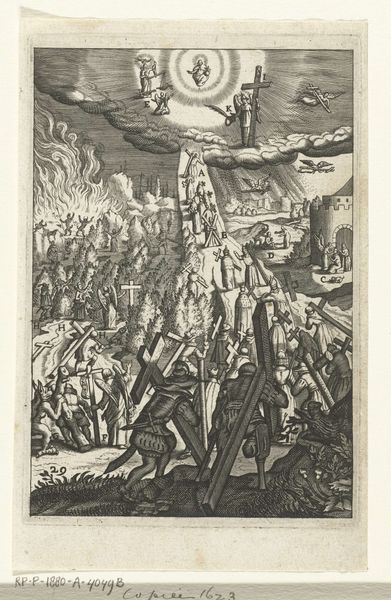
print, engraving, architecture
#
allegory
#
baroque
# print
#
old engraving style
#
history-painting
#
engraving
#
architecture
Dimensions: height 492 mm, width 298 mm
Copyright: Rijks Museum: Open Domain
Curator: This print, "The Catafalque for the Deceased Spanish King Charles II" dates from around 1700 or 1701. It's currently held in the Rijksmuseum's collection, but its creator remains anonymous. Editor: It has a strikingly monumental quality for a print! The elaborate composition rises impressively upwards, almost piercing the cloudy sky. Curator: The engraving shows a baroque style display erected to commemorate Charles II. Its material construction must have required significant resources, highlighting the continued power of the monarchy even in mourning. Editor: Focusing on form, observe how the engraver employs contrasting textures and densities. The smoothness of the obelisk plays off the rugged base, while the sharp lines give way to the soft gradations in the sky. Curator: Consider the context. The grand architectural structure speaks to an entrenched social hierarchy. This temporary monument solidified claims to authority. Editor: Yes, the symbolic order is undeniable. Flags, emblems, the figures arrayed along the monument...all are deployed to communicate Charles II's status and power even in death. Curator: And think of the labor involved, from quarrying stone to hoisting flags, this monument relied on a vast workforce, reinforcing socioeconomic strata. The print itself became a portable display of dynastic wealth. Editor: Indeed, look how the linear structure and perspective generate an image both realistic and stylized, drawing our eye up to the eagle atop the obelisk and the vastness of a kind of eternal heaven. Curator: Prints such as these allowed for the widespread consumption of this spectacle. Disseminating ideals of majesty into homes that could only dream of such opulence, extending soft power far and wide. Editor: It’s fascinating to observe how all the image’s discrete elements come together into an elaborate visual rhetoric. From the texture of the rocks at its base, to the tip of the obelisk, everything is deployed for its desired effect. Curator: Through tracing the making and uses of the print, we gain insight into artistic manufacture during periods of great social transformation and the economic base of the aristocracy and wealthy at the turn of the 18th century. Editor: This exercise in visual thinking has shed some light on how an engraving’s aesthetic construction helps to build a kind of immortality— both for a man and the concept of an everlasting legacy.
Comments
No comments
Be the first to comment and join the conversation on the ultimate creative platform.
